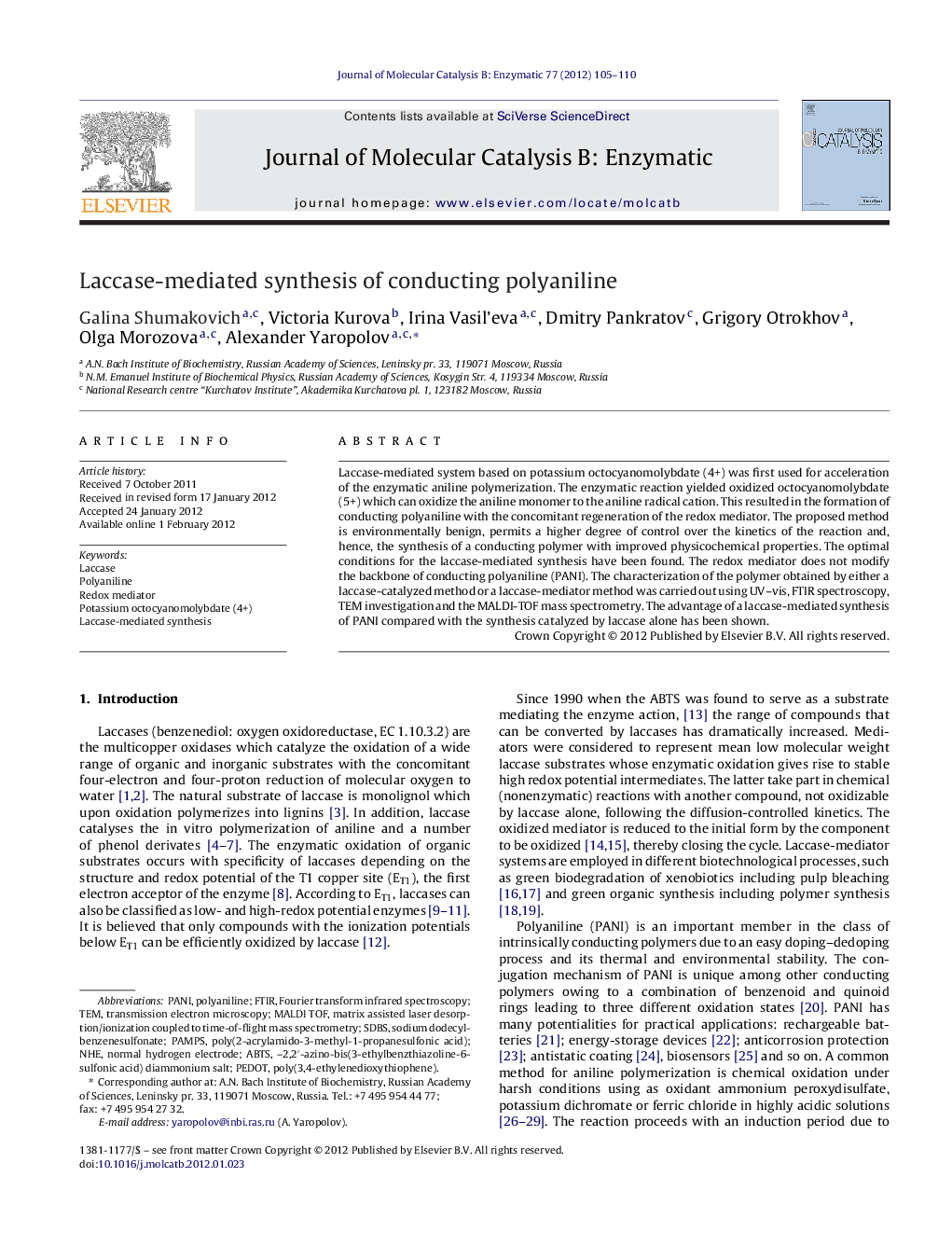| Article ID | Journal | Published Year | Pages | File Type |
|---|---|---|---|---|
| 70257 | Journal of Molecular Catalysis B: Enzymatic | 2012 | 6 Pages |
Laccase-mediated system based on potassium octocyanomolybdate (4+) was first used for acceleration of the enzymatic aniline polymerization. The enzymatic reaction yielded oxidized octocyanomolybdate (5+) which can oxidize the aniline monomer to the aniline radical cation. This resulted in the formation of conducting polyaniline with the concomitant regeneration of the redox mediator. The proposed method is environmentally benign, permits a higher degree of control over the kinetics of the reaction and, hence, the synthesis of a conducting polymer with improved physicochemical properties. The optimal conditions for the laccase-mediated synthesis have been found. The redox mediator does not modify the backbone of conducting polyaniline (PANI). The characterization of the polymer obtained by either a laccase-catalyzed method or a laccase-mediator method was carried out using UV–vis, FTIR spectroscopy, TEM investigation and the MALDI-TOF mass spectrometry. The advantage of a laccase-mediated synthesis of PANI compared with the synthesis catalyzed by laccase alone has been shown.
Graphical abstractFigure optionsDownload full-size imageDownload as PowerPoint slideHighlights► Laccase-mediated system based on potassium octocyanomolybdate(4+) was first used for acceleration of the enzymatic aniline polymerization. ► The enzymatic reaction yielded oxidized octocyanomolybdate (5+) which can oxidize the aniline monomer to the aniline radical cation. ► The proposed method is environmentally benign, permits a higher degree of control over the kinetics of the reaction and, hence, the synthesis of a conducting polymer with improved physicochemical properties. ► The advantage of a laccase-mediated synthesis of PANI compared with the synthesis catalyzed by laccase alone has been shown.
